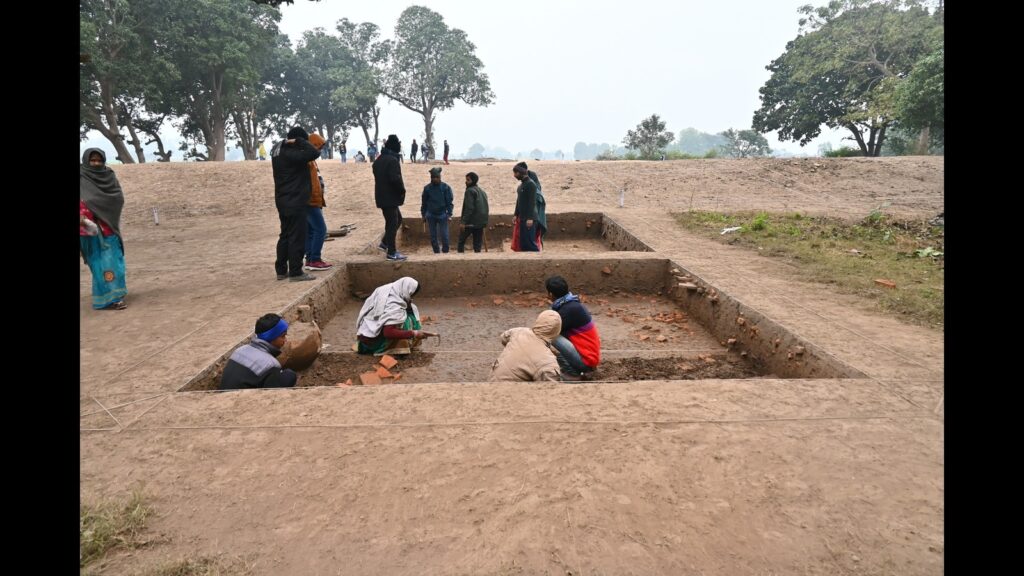Excavations in Maharajganj unearth Kushana, Sunga and Maurya era artifacts

Years-long excavations at the state-protected archaeological site Banarsiha Kala, located in Uttar Pradesh’s Maharajganj district, have unearthed several artifacts, majority of which, according to archaeologists, are the remains of the Kushana period.

According to Renu Dwivedi, director of the UP state archaeology department, several artifacts of the Kushana structure, such as pottery, Kushana bricks, and ring wells, all intact, have been found during the excavation.
“The purpose of the excavation was to identify the maternal home (Devdah) of Lord Buddha,” said Dwivedi. But, as a result of the excavation, archaeological remains from the Kushana, Sunga and Maurya periods came to light from this archaeological site, Dwivedi added.
According to the state archaeology department, apart from the remains of residential structures of the Kushana period, in which storage vessels were kept in each room, clay statues, earthenware, Kushana period copper coins, Anjan Shalaka, stone beads, and copper vessels have also been found.
“Among the major archaeological remains of the Sunga period, clay statues, earthenware, baked clay seals, tank-like structures made of bricks of the Sunga period, ring wells, and copper coins are notable. Particularly noteworthy is the Gajapristakar structure, made of bricks from the Mauryan period, along with remains of the Northern Black Polished Ware tradition,” informed Dwivedi.
“As the winter begins, which is considered an ideal season for excavation, we are starting the third round of excavation. Before this, two excavations were conducted in the last two years,” she said.
As per historical facts, the Kushans were a branch of the Yuezhi, an Indo-European nomadic people who migrated from northwestern China to Bactria in the 2nd century BCE. The Kushana dynasty ruled from the 1st century CE to the 4th century AD. The empire stretched from the River Oxus to the Ganges, covering parts of modern-day Afghanistan, Pakistan, and northern India. It is said that the Kushans were major players in the Silk Road trade. They also promoted Buddhism and developed the Gandhara and Mathura schools of art.




